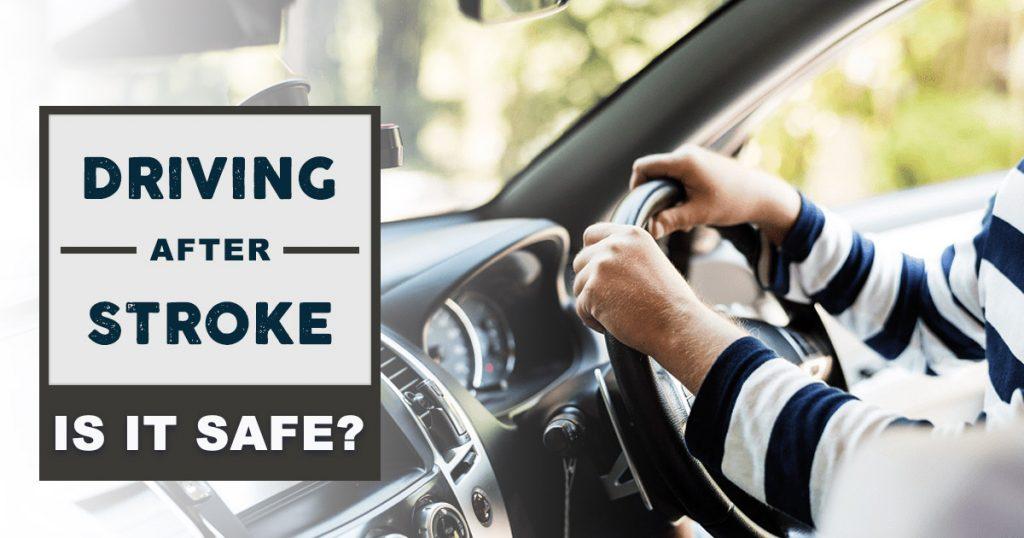Stroke ranks as thefifth most common cause of death in the United States. Nearly 800,000 people have a stroke each year, which is about one person every 40 seconds. Experiencing a stroke can be a life-altering event. It affects people in a variety of ways, frequently causing physical, cognitive, and emotional changes.
One significant concern for stroke survivors is their ability to resume driving. Driving is more than just a mode of transportation; it also represents independence. Get to know whether you can drive after a stroke, the factors involved in making this decision, and the process of regaining driving privileges.
Understanding Stroke and Its Impact on Driving
A stroke occurs when a blockage or blood vessel rupture disrupts blood flow to a portion of the brain. This interruption deprives brain cells of oxygen, causing them to die. The impact of a stroke can vary greatly, depending on the part of the brain damaged and the severity of the incident. Common impacts include:
- Physical impairments: Weakness or paralysis, usually on one side of the body.
- Cognitive impairments: Difficulties with memory, attention, and problem-solving.
- Visual impairments: Vision loss in one or both eyes or visual field cuts.
- Emotional and behavioral changes: Depression, anxiety, or changes in personality.
These changes can significantly affect a person’s ability to drive safely. Therefore, determining if you can drive after a stroke involves a comprehensive evaluation of these impairments.
Can you drive after a stroke?
The answer isn’t just yes or no. It depends on many things, like how severe the stroke was, which parts of the brain were affected, and how well the person is recovering. Here are some factors that can determine if you can drive after a stroke:
1. Severity of the Stroke
The severity of the stroke is a major factor. Minor strokes may result in minimal impairments, allowing individuals to resume driving relatively quickly. In contrast, severe strokes with significant physical or cognitive deficits may make driving unsafe.
2. Recovery Progress
Recovery varies among stroke survivors. Some may regain lost functions quickly, while others may require extended rehabilitation. Continuous improvement in physical and cognitive abilities is crucial for resuming driving.
3. Adaptations and Modifications
Some stroke survivors may benefit from vehicle adaptations. These can include:
- Hand controls: For those with leg weakness or paralysis.
- Steering aids: For those with limited hand strength or dexterity.
- Specialized mirrors: To compensate for visual impairments.
Legal Considerations: Can you legally drive after a stroke?
Driving after a stroke is subject to legal requirements that vary by country and location. Generally, the following steps are required:
- Medical clearance: A healthcare professional must certify that you can drive.
- Driver evaluation: You must pass a formal evaluation, including clinical and on-road assessments.
- DMV approval: The licensing authority must approve your return to driving, often based on medical reports and evaluation results.
In some regions, you may be required to inform the DMV or equivalent agency of your stroke. Failure to do so could lead to legal problems and responsibility if something goes wrong.
Who determines if you can drive after a stroke?
The decision to resume driving is not solely up to the individual. Several parties are involved in assessing whether a stroke survivor can safely return to driving. These include:
- Healthcare professionals: Neurologists, occupational therapists, and other specialists play a crucial role. They evaluate the survivor’s physical and cognitive abilities, considering factors like reaction time, coordination, and visual acuity.
- Driver rehabilitation specialists: These are specially trained occupational therapists who assess driving skills through clinical tests and on-road evaluations. They can provide training and recommend adaptive equipment if needed.
- Licensing authorities: Ultimately, the decision to grant driving privileges rests with the Department of Motor Vehicles (DMV) or an equivalent agency in your region. They may require medical reports and evidence of a passing driving evaluation.
The Evaluation Process
A thorough driver evaluation is necessary before you can legally drive after a stroke. This evaluation typically involves two main components:
1. Clinical Evaluation
A clinical evaluation assesses the physical, cognitive, and visual abilities needed for driving. This may include:
- Vision tests: Visual acuity, peripheral vision, and depth awareness are all being checked.
- Cognitive tests: Checking for memory, focus, and the ability to solve problems.
- Physical assessments: Evaluating strength, range of motion, and coordination.
2. On-Road Assessment
An on-road assessment is conducted in a controlled environment, usually with a driver rehabilitation specialist. This test evaluates:
- Reaction time: How quickly and appropriately you respond to traffic signals and unexpected events.
- Vehicle control: Your ability to steer, brake, and accelerate smoothly.
- Situational awareness: Your ability to navigate traffic, change lanes, and understand road signs.
Tips for Regaining Driving Independence
If you are a stroke survivor aiming to get back behind the wheel, consider the following tips:
1. Follow Medical Advice: Listen to your healthcare team. They understand your specific impairments and recovery progress and can provide tailored recommendations for your situation.
2. Participate in Rehabilitation: Engage in physical, occupational, and cognitive therapy as prescribed. These therapies can help you regain the skills needed for driving.
3. Use Adaptive Equipment: If recommended, use adaptive driving aids. These can make driving safer and more comfortable.
4. Take a Defensive Driving Course: Defensive driving training can help you improve and boost your confidence. These courses often cover techniques for safe driving, handling emergencies, and adapting to changes in driving conditions.
Regain Your Driving Independence After Stroke
Whether you can drive after a stroke depends on various factors, such as the severity of the stroke, the affected brain areas, and your recovery progress. Healthcare professionals and driver rehabilitation specialists will assess your abilities through evaluations. By following medical advice, participating in rehabilitation, and using adaptive equipment if needed, many stroke survivors can regain their driving independence safely and legally.
